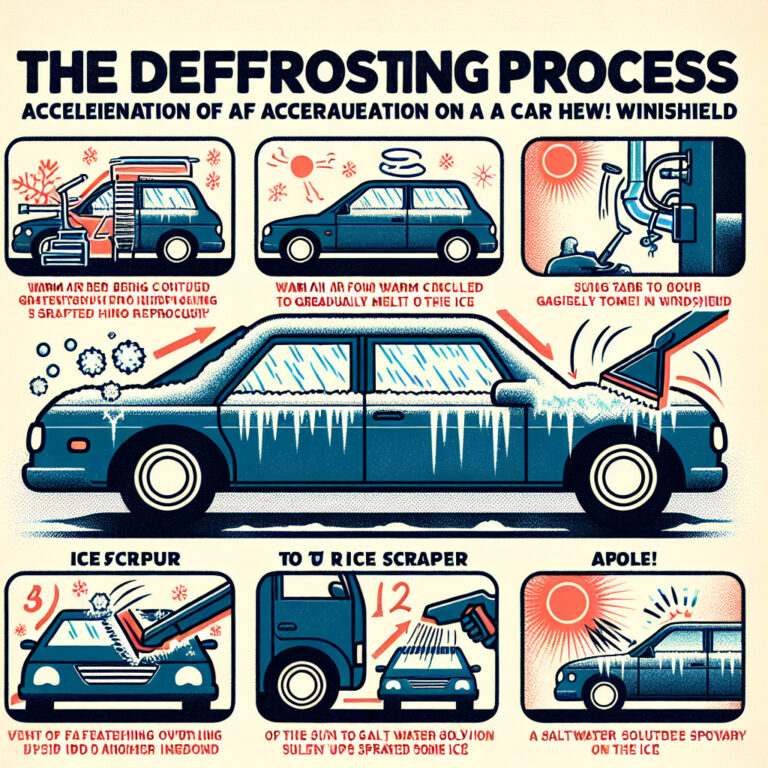Driving during the cold winter months can be challenging, especially when you have to deal with a frosted or misted windscreen. We have all had those frustrating moments of waiting for ages for the windscreen to defrost, impairing our visibility and delaying our journey. However, fear not! My old driving instructor shared a fantastic tip with me that can significantly speed up the defrosting process. By placing your sun shields in the down position, you can trap the warming air from your car’s heaters closer to the inside of the windscreen, resulting in faster de-misting and de-icing. Let’s explore this simple yet effective technique in more detail.
The Science Behind It
To understand why placing your sun shields down helps defrost your car windscreen faster, it’s crucial to delve into the science of heat transfer. When the temperature drops, the air becomes cooler, reducing its ability to hold moisture. As a result, water vapor in the air condenses onto colder surfaces, such as your windscreen, causing fog or frost to form.
To counter this issue, most modern cars are equipped with built-in heaters that generate warm air to melt the frost or evaporate the mist on the windscreen. However, this warm air tends to rise, leaving the lower areas of the windscreen unaffected.
By placing your sun shields in the down position, you create a barrier that prevents the warm air from rising too quickly, trapping it closer to the windscreen. This promotes faster heating of the glass, ultimately enhancing the defrosting process. This technique is particularly effective if you leave the car running for a few minutes before setting off, allowing more time for heat transfer to occur.
Practical Tips for Efficient Windscreen Defrosting
1. Preparation: Before starting your car in cold weather, clear any snow from the windscreen, as it can delay the defrosting process. Additionally, open the windows slightly to allow moisture to escape and prevent condensation inside the car.
2. Set the heating system correctly: Turn on your car’s heaters and adjust the airflow to the windscreen. Remember to select the highest temperature setting and activate the air conditioning if possible. The dry air from the AC helps absorb moisture from the windscreen, accelerating the defrosting.
3. Place sun shields in the down position: Take your sun shields and position them in a slanting manner, directing the warm air towards the lower part of the windscreen. This positioning maximizes the effectiveness of your car’s heaters, resulting in speedy defrosting. If you don’t have sun shields, a piece of cardboard positioned similarly can also work.
4. Use a de-icer or alcohol mix: If your windscreen has a thick layer of ice, you can speed up the process by using a de-icer spray or creating a simple alcohol mix using rubbing alcohol and warm water. Apply this solution to your windscreen, which helps melt the ice faster, making it easier to clear.
5. Avoid pouring hot water: While it may be tempting to use hot water to melt the ice, it can cause damage to the windscreen due to the rapid temperature change. This sudden change can lead to cracks or even shattering in extreme cases.
Defrosting your car windscreen during the winter season no longer needs to be a time-consuming task. By following the advice of my driving instructor and implementing the simple trick of placing your sun shields in a down position, you can enhance the effectiveness of your car’s heaters, resulting in faster de-misting and de-icing.
Remember, preparation is key. Clear snow from your windscreen before starting the car, and open the windows slightly to prevent condensation. Set your heating system to the highest temperature, directing the airflow towards the windscreen, and consider activating the air conditioning for faster moisture absorption.
By creating a barrier with sun shields or cardboard, you can keep the warming air nearer to the windscreen, promoting quicker heat transfer and defrosting. Additionally, consider using de-icer sprays or a homemade alcohol mix to melt ice more efficiently.
Implementing these practical tips ensures that your winter journeys start with a clear and safe windscreen, ultimately reducing the time spent waiting for defrosting. Stay warm and drive confidently this winter season!



